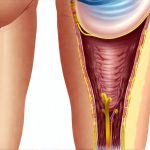Bladder discomfort is an incredibly common experience, ranging from mild irritation to debilitating pain. Many factors can contribute to this, including dietary choices, lifestyle habits, stress levels, and underlying health conditions. Often, people immediately turn to pharmaceutical solutions, but a surprising number of individuals find significant relief – and long-term improvement – by exploring natural strategies that address the root causes of bladder issues rather than just masking the symptoms. This approach focuses on supporting the body’s innate healing capabilities and fostering overall wellness.
It’s crucial to understand that “bladder discomfort” is an umbrella term, encompassing a wide spectrum of conditions like overactive bladder (OAB), interstitial cystitis (IC), urinary tract infections (UTIs – though natural strategies are best used preventatively rather than as treatment for active infections), and simple urgency. Because these issues manifest differently and have varying origins, a one-size-fits-all solution rarely exists. This article will explore practical, holistic approaches that can help restore bladder comfort, emphasizing the importance of individualized care and listening to your body’s signals. Remember, consulting with a healthcare professional is paramount before making significant changes to your health regimen.
Dietary Adjustments for Bladder Health
Diet plays an enormous role in bladder function. Certain foods and beverages are known irritants that can exacerbate symptoms, while others possess properties that soothe and support the urinary tract. Identifying and eliminating trigger foods is often the first – and most impactful – step towards restoring bladder comfort. Common culprits include caffeine, alcohol, spicy foods, acidic fruits (citrus, tomatoes), artificial sweeteners, carbonated beverages, and chocolate. It’s not always about complete elimination; many people can tolerate small amounts of irritants. The key is to identify your personal triggers through careful observation and an elimination diet if needed.
Beyond avoiding irritants, incorporating bladder-friendly foods is essential. These include water-rich options like cucumber and watermelon (hydration is paramount!), blueberries (known for their anti-inflammatory properties), pears, bananas, and oatmeal. Foods rich in antioxidants also help protect the urinary tract from damage. A diet focused on whole, unprocessed foods provides the building blocks your body needs to heal and function optimally. Prioritizing hydration is arguably the most important dietary factor, aiming for at least eight glasses of water per day, adjusted based on activity level and climate. You can further enhance hydration with strategies explored in hydration support techniques.
Finally, consider food sensitivities or allergies that might be contributing to inflammation throughout the body, including the urinary tract. Gluten, dairy, and soy are common allergens that can trigger inflammatory responses in some individuals. Working with a healthcare professional to identify potential sensitivities through testing or an elimination diet can be incredibly beneficial.
Pelvic Floor Muscle Training
A strong and healthy pelvic floor is essential for bladder control and overall urinary function. These muscles support the bladder, urethra, and other pelvic organs. When these muscles are weak or dysfunctional, it can lead to urgency, frequency, stress incontinence, and even contribute to chronic pain conditions like interstitial cystitis. Pelvic floor muscle training (PFMT), often referred to as Kegel exercises, is a powerful tool for restoring bladder comfort.
- Locate your pelvic floor muscles: Imagine you’re trying to stop the flow of urine midstream – these are the muscles you engage. However, do not perform Kegels while urinating, as this can actually weaken the muscles over time and potentially lead to other issues.
- Practice regularly: Start with 10-15 repetitions several times a day. Focus on proper form—squeeze the muscles, hold for a few seconds, then release slowly. Avoid tightening your abdominal, gluteal, or thigh muscles during the exercise.
- Consider professional guidance: A physical therapist specializing in pelvic floor health can provide personalized instruction and ensure you’re performing Kegels correctly. They can also assess for muscle imbalances or dysfunction that may require specific exercises beyond basic Kegels.
It’s important to note that PFMT isn’t just about strengthening; it’s also about relaxation. Many people with bladder issues have hyperactive pelvic floor muscles, meaning they’re constantly tense. Learning how to relax these muscles is equally crucial for restoring normal function and reducing discomfort. Techniques like diaphragmatic breathing and progressive muscle relaxation can be helpful adjuncts to PFMT.
Stress Management & Mind-Body Techniques
The connection between stress and bladder health is profound. Chronic stress can significantly worsen bladder symptoms, leading to increased frequency, urgency, and even pain. This is because stress triggers the sympathetic nervous system – the “fight or flight” response – which causes muscles to tense up, including those in the pelvic floor. Furthermore, stress can weaken the immune system, making individuals more susceptible to infections. Addressing stress through mindful practices is therefore a vital component of restoring bladder comfort.
Several mind-body techniques can be incredibly effective for managing stress and calming the nervous system:
1. Deep breathing exercises: Diaphragmatic breathing helps activate the parasympathetic nervous system – the “rest and digest” response – promoting relaxation and reducing tension.
2. Meditation & mindfulness: Regularly practicing meditation or mindfulness can help you become more aware of your thoughts and emotions, allowing you to respond to stress in a healthier way.
3. Yoga & Tai Chi: These practices combine physical postures with mindful breathing, fostering both physical and mental well-being.
Beyond these specific techniques, prioritizing self-care is essential. This includes getting adequate sleep, engaging in enjoyable activities, spending time in nature, and connecting with loved ones. Creating a supportive network and seeking professional help when needed are also crucial steps towards managing stress effectively. Remember that self-compassion is key – be kind to yourself during times of stress and remember that healing takes time. Consider incorporating calming routines into your self-care plan.
Herbal Remedies & Supplements
While not a replacement for lifestyle changes, certain herbal remedies and supplements may offer supportive benefits for bladder health. D-mannose, for example, is a naturally occurring sugar found in cranberries and other fruits. It can help prevent UTIs by preventing bacteria from adhering to the urinary tract walls. However, it’s important to note that D-mannose is preventative only and should not be used to treat an active UTI without consulting a healthcare professional.
Other potentially helpful supplements include:
* Magnesium: Can help relax pelvic floor muscles and reduce stress.
* Vitamin C: Supports immune function and may help prevent UTIs.
* Quercetin: An antioxidant with anti-inflammatory properties that may benefit individuals with interstitial cystitis.
* Aloe vera: Some studies suggest aloe vera juice can provide relief for IC symptoms, but further research is needed.
It’s critical to exercise caution when using herbal remedies and supplements. Always choose reputable brands, follow dosage instructions carefully, and be aware of potential interactions with medications you’re taking. Consulting with a qualified healthcare professional – such as a naturopath or integrative medicine doctor – is essential before starting any new supplement regimen. You might also find probiotic support helpful for overall urinary health.
Disclaimer: This article provides general information about natural strategies for restoring bladder comfort and should not be considered medical advice. It’s crucial to consult with a qualified healthcare professional for personalized diagnosis and treatment recommendations. For those concerned about more serious conditions, understanding potential bladder cancer signs is also important.





















